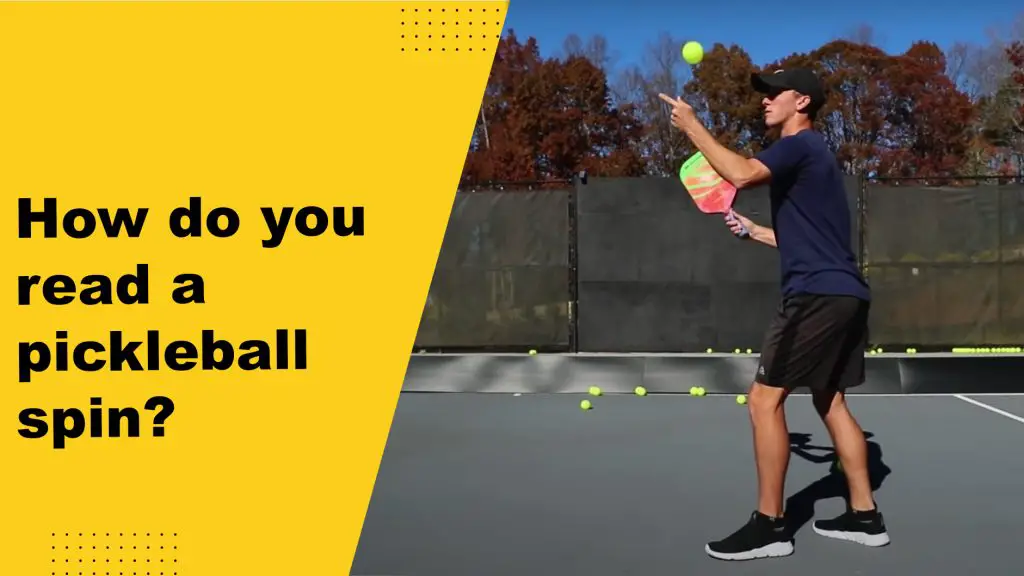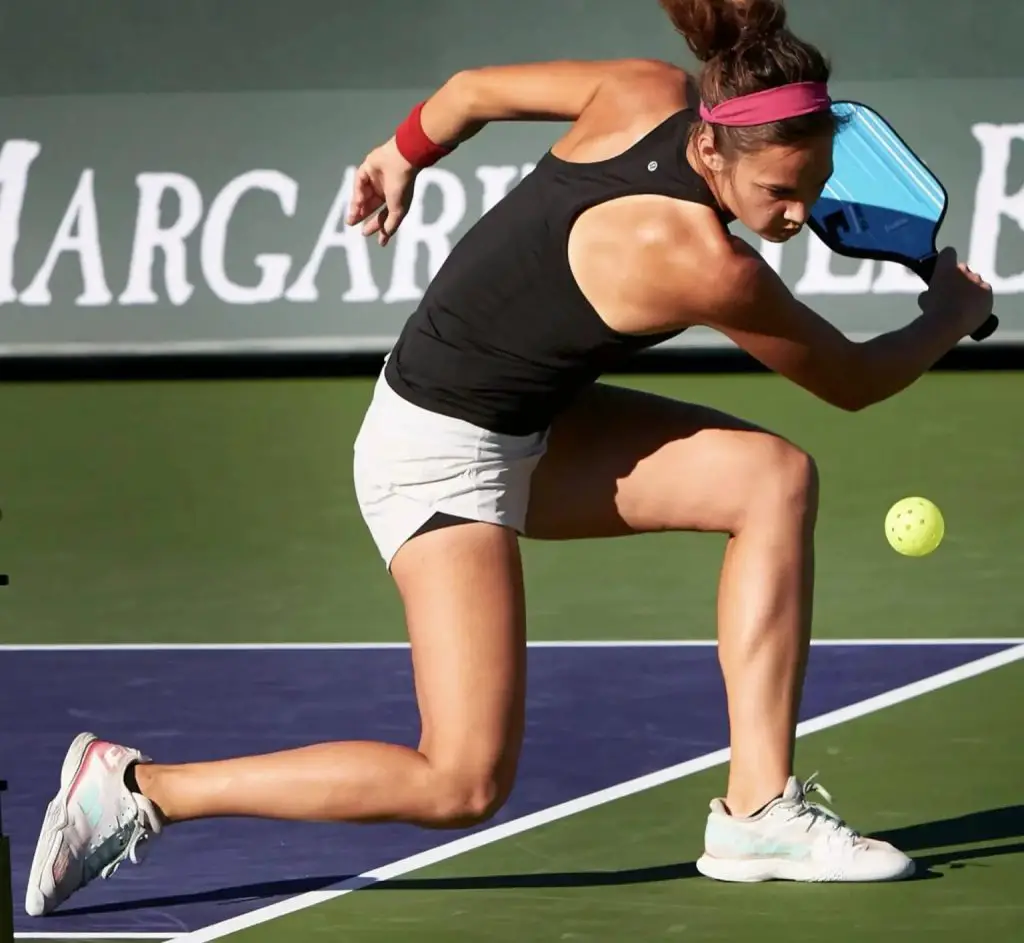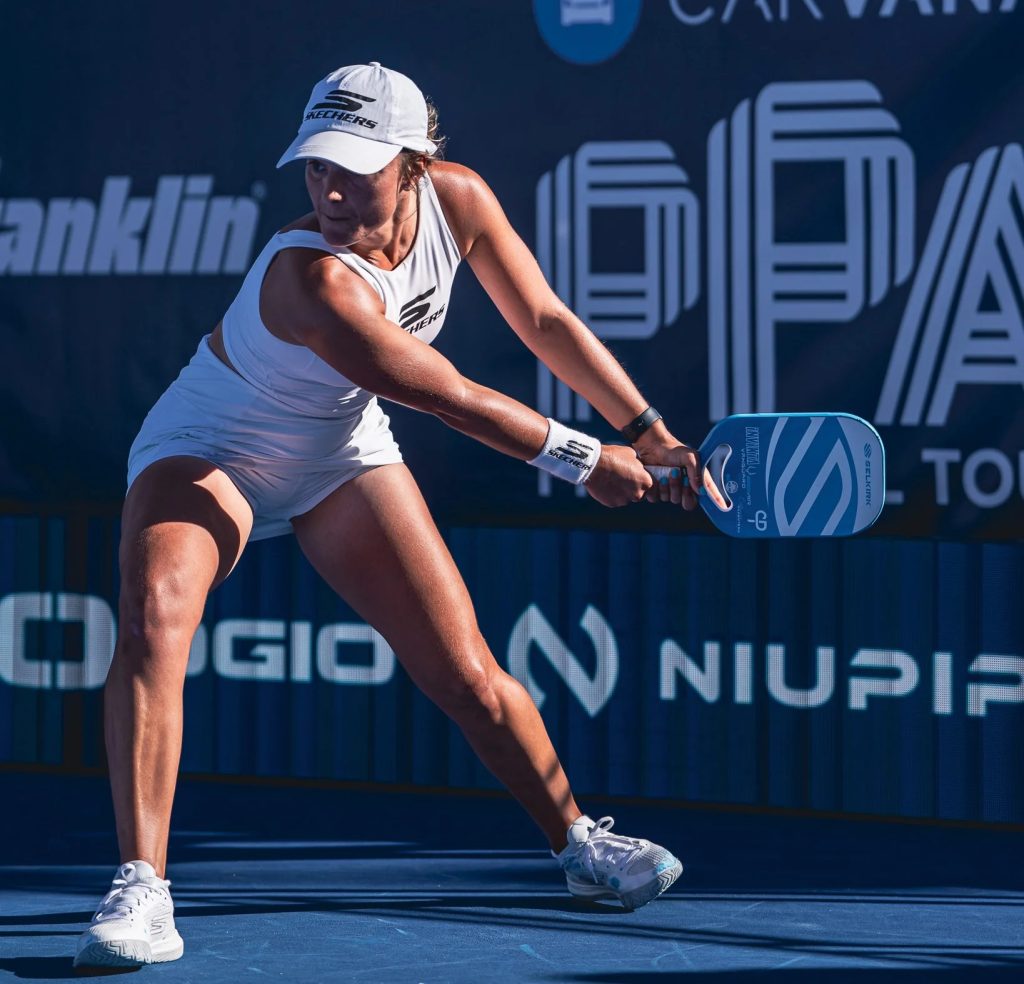
Have you ever wondered how the ball mysteriously curves or changes direction in a pickleball game? Well, it’s all about spin! Understanding how to read spin in pickleball is a crucial skill that allows you to anticipate your opponent’s shots and react accordingly. In this comprehensive guide, we will walk you through the intricacies of deciphering spin in pickleball, helping you gain a competitive edge on the court.
The Basics of Spin in Pickleball

To comprehend spin in pickleball, it’s essential to first grasp the underlying mechanics. Pickleball spin refers to the rotation imparted on the ball by the player’s paddle when striking it. The two primary types of spin encountered in pickleball are topspin and backspin:
1. Topspin
Topspin occurs when the ball rotates from the top toward the bottom as it moves through the air. It is commonly produced by striking the ball with a downward motion, pushing it forward while creating a topspin effect. As a result, the ball dips and accelerates forward upon hitting the court, making it challenging for your opponent to defend against.
2. Backspin
On the other hand, backspin involves the ball spinning in the opposite direction, from the bottom toward the top. By brushing the paddle underneath the ball, you impart backspin that creates a floating effect, making the ball slow down upon impact. Backspin is useful for drop shots or shots that force your opponent to move up toward the net.
Reading Topspin and Backspin
Now that we understand the types of spin, let’s delve into the techniques for reading topspin and backspin. Properly identifying the spin on the ball will help you anticipate the trajectory and react accordingly.
1. Recognizing Topspin
When facing a shot with topspin, several visual cues can give it away:
- The ball’s trajectory will be slightly downward.
- The ball’s speed is usually faster than shots without spin.
- The bounce of the ball after it lands will have a flatter trajectory.
- Your opponent’s paddle face will move from high to low during contact.
By actively observing these indicators, you can quickly decipher topspin and anticipate the ball’s path accurately.
2. Identifying Backspin
Detecting backspin can be equally important in your pickleball strategy. Consider these visual cues to recognize when your opponent imparts backspin on the ball:
- The ball’s trajectory will appear slightly higher.
- The ball’s speed slows down upon landing.
- The bounce has a more exaggerated upward trajectory.
- Your opponent’s paddle face moves from low to high during contact.
Being able to read backspin is crucial to anticipate drops shots and accurately gauge the speed and trajectory of the ball.
Tips and Tactics for Dealing with Spin

Now that we’ve covered how to identify topspin and backspin, let’s explore strategies to effectively handle these spinning shots.
1. Adjust Your Positioning
When facing shots with topspin, it’s advisable to position yourself slightly farther back from the baseline. This allows you more time to react to the increased speed of the ball. Conversely, shots with backspin often require players to move forward, reducing the distance between you and the net to control the ball effectively.
2. Use a Looser Grip
When dealing with topspin shots, it’s beneficial to maintain a loose grip on your paddle. This helps absorb the extra pace coming off the opposing player’s shot, making it easier to manage the power and redirect the ball with precision.
3. Practice Footwork and Reaction Time
Improving your footwork and reaction time is vital to reading spin effectively. By training your body to move quickly and efficiently, you can position yourself in the right spot to handle the spin, giving you an advantage over your opponent.
4. Experiment with Spin Yourself

One of the best ways to learn how to read spin is to experiment with spinning the ball yourself. Practice generating topspin and backspin shots during training sessions. This firsthand experience will give you a better understanding of how the ball behaves and help you read your opponent’s shots more accurately.
Conclusion
In pickleball, understanding and deciphering spin can significantly enhance your gameplay. By recognizing the visual cues and employing effective strategies to handle different types of spin, you can take your skills to new heights. Remember, practice makes perfect. So, grab your paddle, head to the court, and start honing your skills in reading spin. With patience and experience, you’ll soon be anticipating your opponent’s shots with ease.
“Reading spin in pickleball is like solving a puzzle – each rotation offers a clue to the ball’s trajectory.” – Anonymous

I am Michael Wanner, an experienced and educated expert in the field of pickleball. I hold a degree in Sports Science from Cleveland State University, Ohio, USA. My expertise lies in the technical aspects of pickleball and how to play it effectively. I have spent many years playing and coaching pickleball and have a wealth of knowledge to share with my readers. I am a valuable resource for anyone looking to improve their pickleball skills and strategies.
